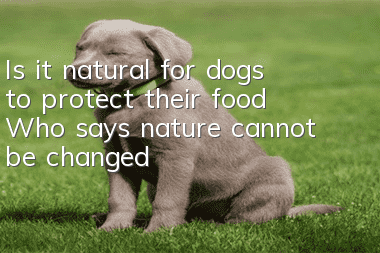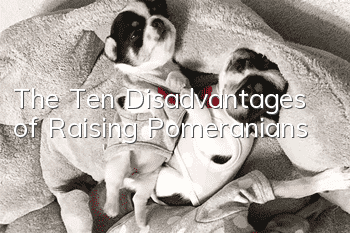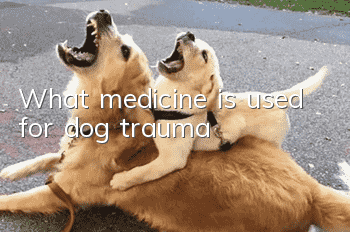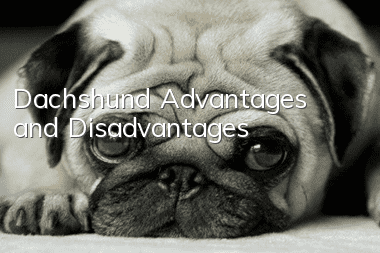Is it natural for dogs to protect their food? Who says nature cannot be changed?

It is natural for dogs to protect their food
In the wild, animals that can successfully protect their important resources (such as food, mates, and territory) are more likely to survive. Dogs’ food-protecting behavior is a natural instinct. However, under domestic conditions, we do not want dogs to have food-protecting behavior, because this kind of behavior will cause a lot of trouble, especially it may cause harm to people.
Resource guarding behaviors in dogs can range from relatively benign behaviors, such as running away with objects in their mouths or barking at approaching people, to severe aggressive behaviors, such as mouthing Biting or chasing people away. Some dogs display this resource guarding behavior only toward strangers; some dogs display this behavior toward all people. Different dogs find different things valuable. Some dogs only guard chewed bones or toys, and some dogs guard socks. Many dogs guard food.
Dogs’ food protection needs to be corrected
In many cases, food protection behavior does not require special correction. Most owners let their dogs eat alone. For example, they place the food bowl in a quiet corner and do not disturb the dogs when they eat. They also provide their dogs with sufficient food. b>, this will greatly reduce the dog’s impulse to protect food and the dangers that may be caused by food-protecting behavior. However, if there are children in the home, special care is needed. Children play with dogs unscrupulously, pulling and pulling, and competing for toys and even food. However, children cannot recognize the warning signs of dogs and are easily bitten. In some cases, living with a dog that exhibits food-protective behavior can also be very risky for adults. For example, dogs will guard the food on the table and cabinet, food dropped on the floor, or food stolen from the trash can. When you come into contact with these foods, the dog may show food-protecting aggression and hurt you.
How to prevent food guarding behavior
1. Let your dog sit down before feeding. This will help the dog form the awareness that you are the provider and the dominant one of food, which is helpful for dogs with strong dominance.
2.Keep petting your dog while she eats. This way she will get used to you being there when she eats and understand that you won't take away her food.
3. After your dog learns to recall, call her to you when she is eating and give her a reward, such as a small snack, chicken or something. Then let her return to the food bowl and continue eating.
4.When the dog finishes eating, give her an extra reward. If you insist on doing this, she'll look forward to the extra treat and thus want you to be there while she eats.
Methods to correct food guarding behavior
1.Let the dog sit down before feeding.
2.Feed your dog after you have finished eating. Make sure your dog knows that you are in control of food and when.
3.Don’t keep food in your dog’s bowl. This is based on the wolf pack theory and is similar to the previous two principles. If your dog determines that you are the one in control of her food, she is more likely to view you as the leader and will not behave aggressively toward you.
4.Feed at least twice a day, so your dog doesn’t get too hungry between meals. Some food guarding behaviors occur because dogs don’t know when they will get their next meal.
5.Choose a quieter and safer place at home to feed the dog, such as a quiet balcony, rather than the living room or kitchen where people often move around, so the dog will be less likely to feel There is a threat. For some dogs, you may need to let her eat alone and not put the food bowl away while she is still near it.
6. Use confrontational conditioning to get her used to your presence. When she feels threatened, immediately give her a snack such as chicken jerky and then walk away. Do this every day until she associates you being near her food bowl with being rewarded with a special treat. Over time, she will become less aggressive towards you and won't mind you coming near her food bowl. This is a slow method and requires constant reinforcement, but it may help if none of the methods listed above are sufficient.
7. Changing the food bowl may help. There are of course many other ways that may be more effective, but don't expect a food bowl to solve your problem.
Notes
Do not yell at the dog, Do not use violence to stop the dog from guarding its food, Also Don't take away her bowlwhen she's growling. These measures may be effective temporarily, but the problem may get worse.
If your dog has other protective behaviors, such as guarding his bed and toys, you can also try these methods. If these methods don't work for your dog, it's best to find a professional dog trainer to adjust them.
- Essential tools for dog bathing
- Daily care for Dalmatian nails
- How to do toilet and urination training for dogs?
- Three things to pay attention to when choosing clothes for your dog
- Puppy deworming and vaccination sequence
- How to train a dog not to eat randomly? Dogs are prohibited from picking up food anywhere!
- Introduction to symptoms of early pregnancy in Chihuahuas
- How to treat lactation in female dogs after giving birth?
- What should I do if my dog poops and urinates indiscriminately? Correct the dog’s pooping and urinating behavior!
- Why do Samoyed dogs vomit? These are the reasons why Samoyed dogs vomit!



